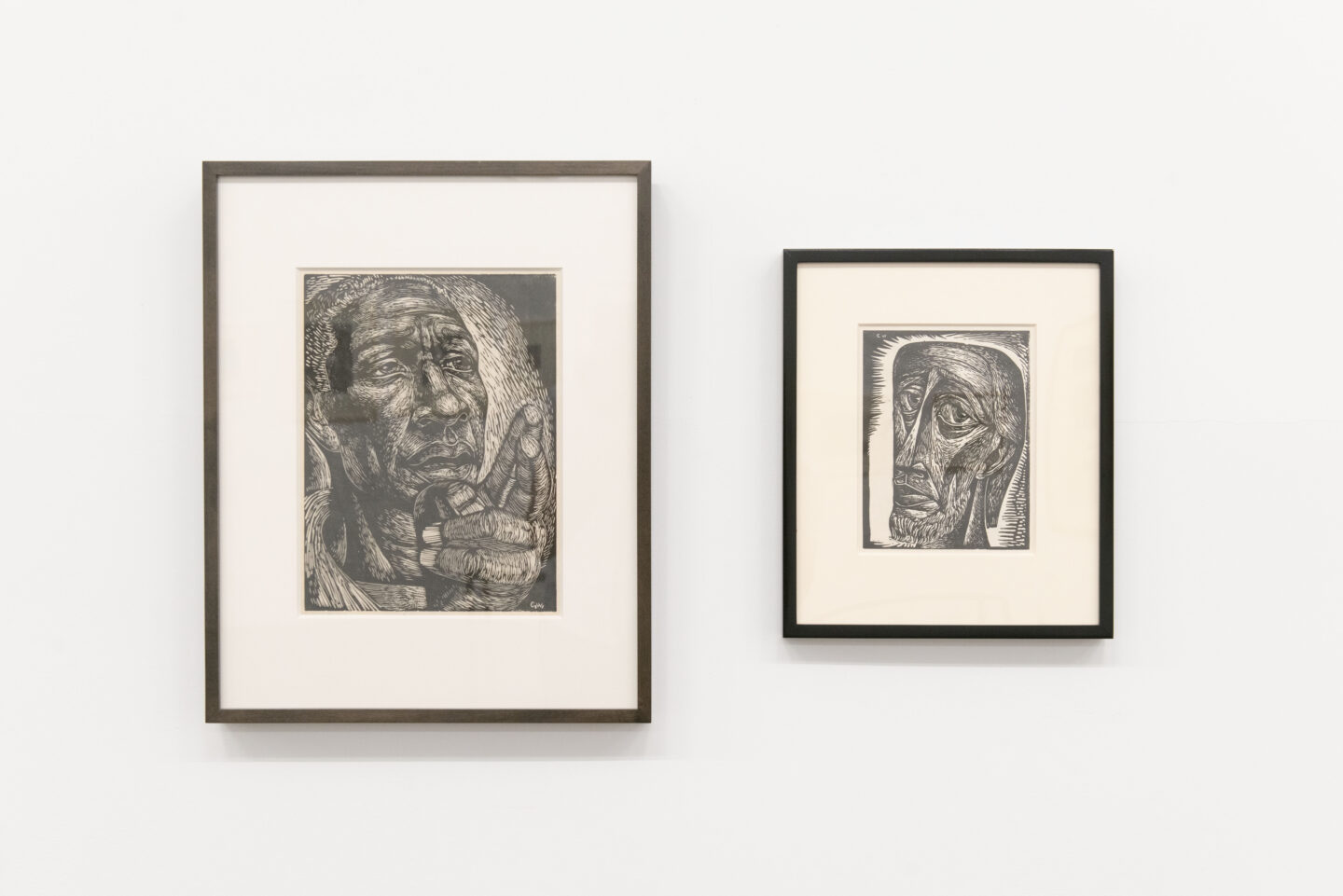
Charles White
“I am black, a woman, a sculptor, and a printmaker. I am also married, the mother of three sons, and the grandmother of five little girls (now seven girls and one boy) […] all of these states of being have influenced my work and made it what you see today.”
– elizabeth catlett
Collaborative processes have a rich tradition in Mexico, and one of the initiatives whose imprint is widespread is that of the Taller de Gráfica Popular (People’s Graphic Workshop), better known as the TGP, which dates back to 1937. Several of the founding members came from another group called the Liga de Escritores y Artistas Revolucionarios (League of Revolutionary Writers and Artists). Reverberating precepts promoted by Muralism, they continued to encourage visual production committed to struggles and social justice, denouncing situations in which peasants and workers lived, and especially resisting and questioning messages, effects or practices linked to prevailing fascism.
The TGP’s graphics – in the spirit of agitation and propaganda – also circulated through posters, flyers, and calendars, appealed to a visual militancy and also to a critique of production models focused on the individual artist.
The TGP promoted instead organizational resources of a collective nature through meetings and assemblies, as can be seen in the photographs. In them they discussed what to represent, how to form the group of volunteers who would produce the image, taking care that the agent in charge was recognized, and at the same time, the collective exercise through the TGP’s distinctive seal/logo.
In March 1938 the TGP approved a document which contained its interests and objectives, a kind of manifesto or statement in which they agreed to work in lithography, metal and wood printmaking and linoleum.
This workshop is created in order to stimulate the production graph in order to benefit the interests of the people of Mexico, and for that objective is proposed to bring together the largest number of artists through the method of collective production.
Although this document was not published, years later, in March 1945, they published their
Declaration of Principles in which they reaffirmed themselves as a center of collective work for functional promotion, as well as their vision of art at the service of the people, so that their production should reflect the social realities of their time.
Like other collective strategies over time, the TGP had various moments of cohesion and internal tension, its participants varied in number and geographical origin at different times. Among its members were artists such as Leopoldo Méndez, Pablo O’Higgins, Luis Arenal and Adolfo Mexiac, also had an important participation of women artists such as Mariana Yampolski, Rini Templeton, Elizabeth Catlett and Margaret Taylor, whose work, in the context of the new feminisms and the depatriarchalizing of history, is being revalued and situated.
Given the great artistic performance and the profuse political activity of the TGP, various foreign artists (mainly American) temporarily joined the workshop to contribute their work to the production of socio-political prints; these artists were called guest artists and some of them were: John Wilson, Hannes Meyer, Lena Bergner, Charles White, Eleanor Coen, Margaret Taylor Goss Burroughs, Rini Templeton, Elizabeth Catlett, among others. These links consolidated the international character of the TGP and in a way stimulated the development of other related projects such as Workshops of Graphic Art in Los Angeles, San Francisco, and New York.
Another of the guest artists was Charles White, like Catlett of African-American origin, whose production was primarily focused on combating distortions and stereotypes about African-Americans that were disseminated in popular visual culture. Over time, his interests became linked to political, trade union, and gender realities. White traveled to Mexico in 1946, accompanied by Elizabeth Catlett, and upon coming into contact with the TGP reaffirmed his interest in printmaking given the scope it could have due to the reproducibility, the diaspora or circulation that print runs allowed, and its low cost of production.
He returned to New York in 1949 and collaborated in the New York Graphic Workshop, which, like the Mexican TGP, would have an important effect on the dissemination of social graphic art, especially in defense of the rights of African-Americans. Some of his portraits stand out, such as that of Bessie Smith, the blues pioneer popularly known as the “empress of the blues,” who was buried in a grave without a headstone until Janis Joplin wrote the following epitaph: “The greatest blues singer in the whole world will never stop singing. Bessie Smith, 1895–-1937” or the portrait of Frederick Douglass who was linked to various anti-slavery initiatives and who promoted abolitionism. Douglass was born into slavery and therefore developed critical perspectives on freedom and human rights mainly related to African-American communities who, like him, were subjected to enslavement.
getsemaní guevara and sol henaro
translated from Spanish by ana laura borro
Charles White (Chicago, IL, USA, 1918 – Los Angeles, CA, USA, 1979) was a draftsman, printmaker, and painter. One of his most well-known works is the mural The Contribution of the Negro to American Democracy (1943) at Hampton University. His works are included in the collections of the Metropolitan Museum of Art, MoMA (New York, USA), and the Smithsonian American Art Museum (Washington, DC, USA), among others.
- Vista de obras de Charles White durante a 35ª Bienal de São Paulo – coreografias do impossível © Levi Fanan / Fundação Bienal de São Paulo
- Vista de obras de Charles White durante a 35ª Bienal de São Paulo – coreografias do impossível © Levi Fanan / Fundação Bienal de São Paulo
- Vista de obras de Charles White durante a 35ª Bienal de São Paulo – coreografias do impossível © Levi Fanan / Fundação Bienal de São Paulo

 Português
Português

